Should you consider 3 Way Link Building for SEO?
What is 3 way link exchange?
A 3 way link exchange or also called ABC linking is a reciprocal link exchange between three domains. It has evolved from a direct backlink exchange to decrease the likelihood of getting detected and penalized for excessive link exchanges by search engines like Google.
3 way linking is considered a black hat link-building tactic and should be avoided by website owners.
How does 3 way link building work?
In a direct link exchange or swap, two domains refer to each other.
- Domain A links to domain B, and
- Domain B links to domain A.
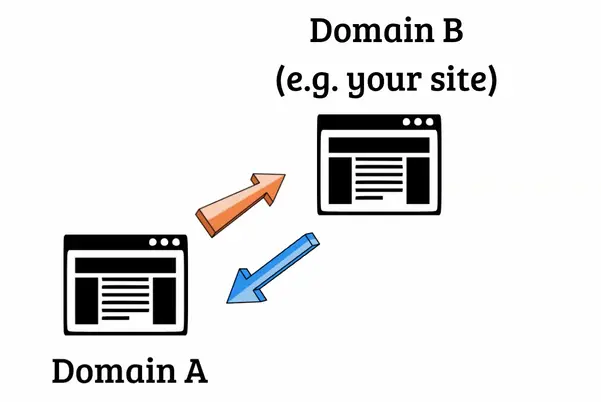
In 3 way link building a third domain C enters the mix so that none of the three involved domains directly link to each other.
- Domain A links to domain B, and
- Domain B links to domain C
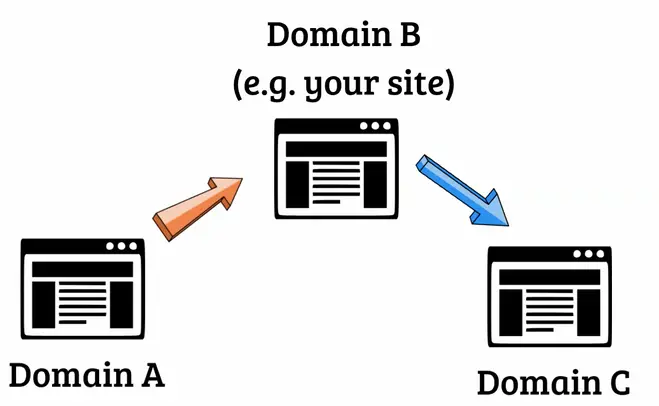
Additionally, it could also be that domain C links to A so that everyone in the mix receives a backlink.
How to recognize an ABC link exchange offer?
As a website owner or webmaster, I’m sure you’ve come across an email like this:
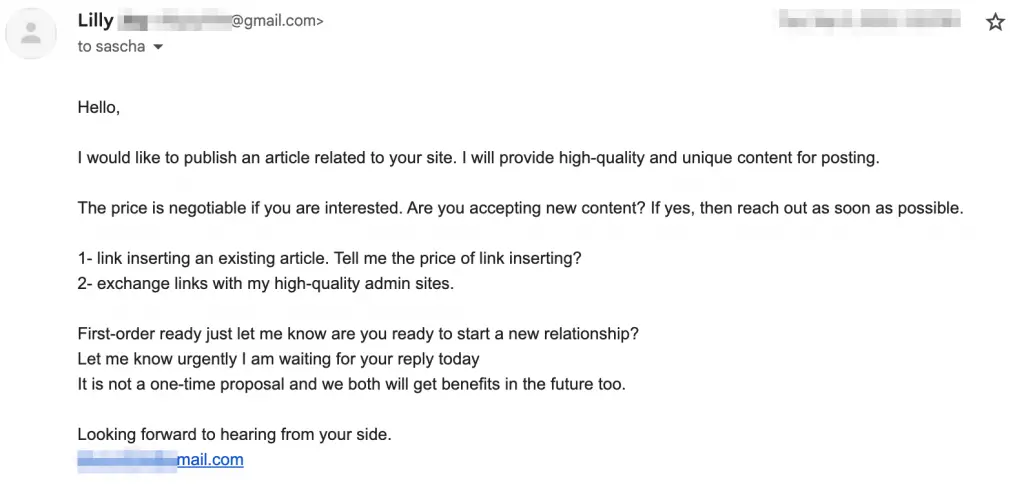
Someone offers a permanent backlink from a “high-quality” admin site in exchange for you linking to their main website.
Why do people use ABC linking?
The main reason why website owners use 3 way backlink building is to disguise direct link exchanges.
When SEO marketers discovered the power of backlinking they used every technique at their disposal like commenting on blog comments, creating social profiles, and swapping links with one another. Every website owner has seen an email like this: “Hey, do you want to exchange links?”.
However, Google and Co quickly realized that this is not organic backlinking and took away the idea of backlinks: They count as an upvote for the page as a trustworthy resource.
In 2016, when Google enforced white hat backlink techniques and penalized back and gray hat link building with its Penguin algorithm update, SEOs needed a new way to “trick” Google and build links.
ABC linking was born to cover up link-for-link swaps. Often website owners own multiple websites – sometimes even only to support their main site for link building.
In order to still get a link from the desired domain, they offer a link from one of their other domains or truster 3rd party site.
What does Google say about 3 way link building?
Google’s link scheme policies clearly state that “excessive link exchanges (“Link to me and I’ll link to you”) or partner pages exclusively for the sake of cross-linking” can impact the site’s ranking negatively.
In plain English, that means that 3 way ABC link exchanges are similarly harmful to your website as direct link swaps.
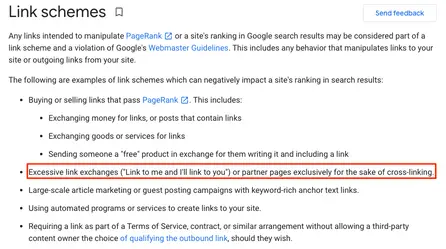
How could Google detect ABC linking?
Google may identify the ABC link swaps not because of your few link swaps but the excessive link exchanges of your “partners”. If someone offers you a 3-way link exchange, chances are they have done this before and will do it again.
If the C site often receives a backlink from a new domain and at the same time that site receives a link from the A domain (A links to B and B links to C) search engines may pick up on that.
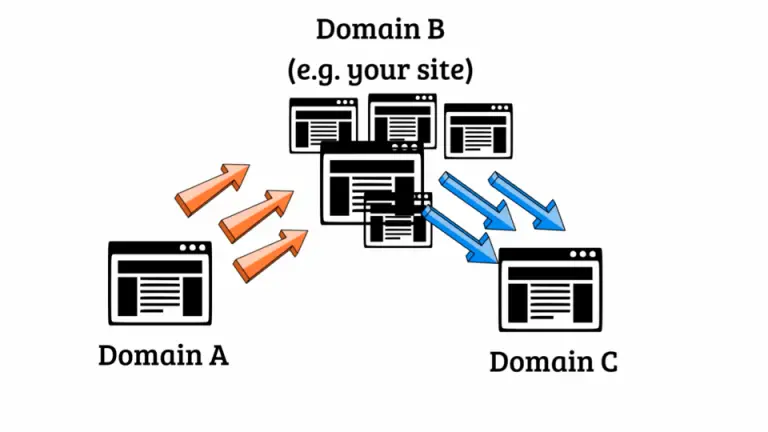
Of course, the more sites are in the mix, and the more organically looking the links are, the harder it is to detect, but Google might pick up some patterns.
Not all direct link exchanges are bad
I want to mention that not all direct link exchanges are harmful to your SEO. As Google says in their policies it is excessive use. For example, if you get mentioned in a major publication and they link to your website, it’s just normal to brag on your website about the feature and also link back to that article.
If you have a legit partner site you can also link back to that page. We also have a partner site that is a great resource for start-up founders. They can learn more about business ideas over there, while we cover marketing tips that will help them grow their upstart.
How can I check if someone offers me a 3 way link exchange?
The answer is very simple: You don’t have to check. Just never accept any links for the exchange of a link. One way or another.
Should I do 3 way link building?
No, don’t participate in any direct or 3 way ABC link exchanges. The downside of getting caught outweighs the potential gains. Google and other search engines are getting smarter and smarter. They analyze anchor texts and pieces of content that link out to other pages and quickly identify scammy black or gray hat link-building methods.
White hat 3-way SEO link-building alternatives
Direct or 3 way link-for-link exchanges are not the only way to build more backlinks to your website. Luckily, some white hat tactics are great for increasing your SEO profile:
- Organic backlinks: this sounds pathetic, but the best way to build a great backlink profile is by creating great content like blog posts, infographics, research papers, or any other link-worthy resource.
- Guest speaking or interview: If you are a guest on a podcast or cited for another blog post, chances are that the person interviewing you will link back to a page where users can find out more about you. In that case, I wouldn’t worry about the potential link exchange flag if you mention your featured episode on your blog, too. But remember, don’t just do the interview for the backlink, do it for the exposure, network effects, or just to help someone out. The backlink is extra – if provided.
- HARO: similar to being interviewed, you can actively reach out to reporters by answering their questions on services like HARO (formerly Help A Reporter Out). They usually also link to a resource of their sources.
- Legit guest blogging: You can write a genuine guest post. Guest posting can be seen as a dodgy link building strategy, however. In moderation, and done right on relevant sites, it can be a powerful backlink. Some tips for guest posts for backlinking:
- Don’t overuse links within the content.
- Only write on relevant sites (same industry for example)
- Don’t pay for the guest post for the sake of the backlink. If you pay for the exposure it has to be marked as a sponsored post and the link should be also classified as such. (rel attribute is “sponsored” and nofollow)
- Even if the site seems trustworthy and may have high domain authority, check their backlink and outgoing link profile. If they, for example, have a lot of outgoing links compared to incoming links, you don’t want to be associated with that.
- Cleaning up toxic backlinks: Even if you didn’t actively build links, they could be harmful to your site. Conduct regular backlink audits to identify toxic links and ask to remove or disavow them. Maintaining a healthy backlink profile is more important than just the number of referring domains.
What makes a good backlink to your website?
The main misconception I always see and hear is the focus on DR or DA – domain rating or domain authority. This metric is an arbitrage score from SEO tools like ahrefs, MOZ, or SEMRush to gauge the authority of a website based on its backlinks.
This score can easily be faked and does not result in higher traffic!
Google does not use a score like this. While they heavily rely on backlinks, their algorithm is much more complex.
So what should you focus on, if not DR for SEO backlinks?
The best checklist for a quality backlink contains three elements:
- Is the content relevant to your content – ideally the entire domain or at least the category? E.g. a medical website or /medical/ sub-category of a magazine.
- Does the website or (even better) page you receive the link from have any organic traffic? Organic traffic is the real quality metric. If Google sends traffic to a page, it means the page is trustworthy.
- Does the website have a good ratio of inbound to outbound domains? Meaning does the page have more backlinks pointing to its website than it linking to other pages
If you just focus on these 3 elements, your backlink profile will be ok!

Sascha is a Lifecycle Marketing Consultant with over 8 years of digital marketing experiences in Silicon Valley, the UK, and Germany.
After leading the demand generation for a 100+ million company, he decided to venture out on himself. He’s now helping clients to attract and convert more leads and customers.
His main focus are SEO, paid media & marketing automation – all with the focus to tie marketing campaigns to revenue.
Sascha has been featured in industry publications.



